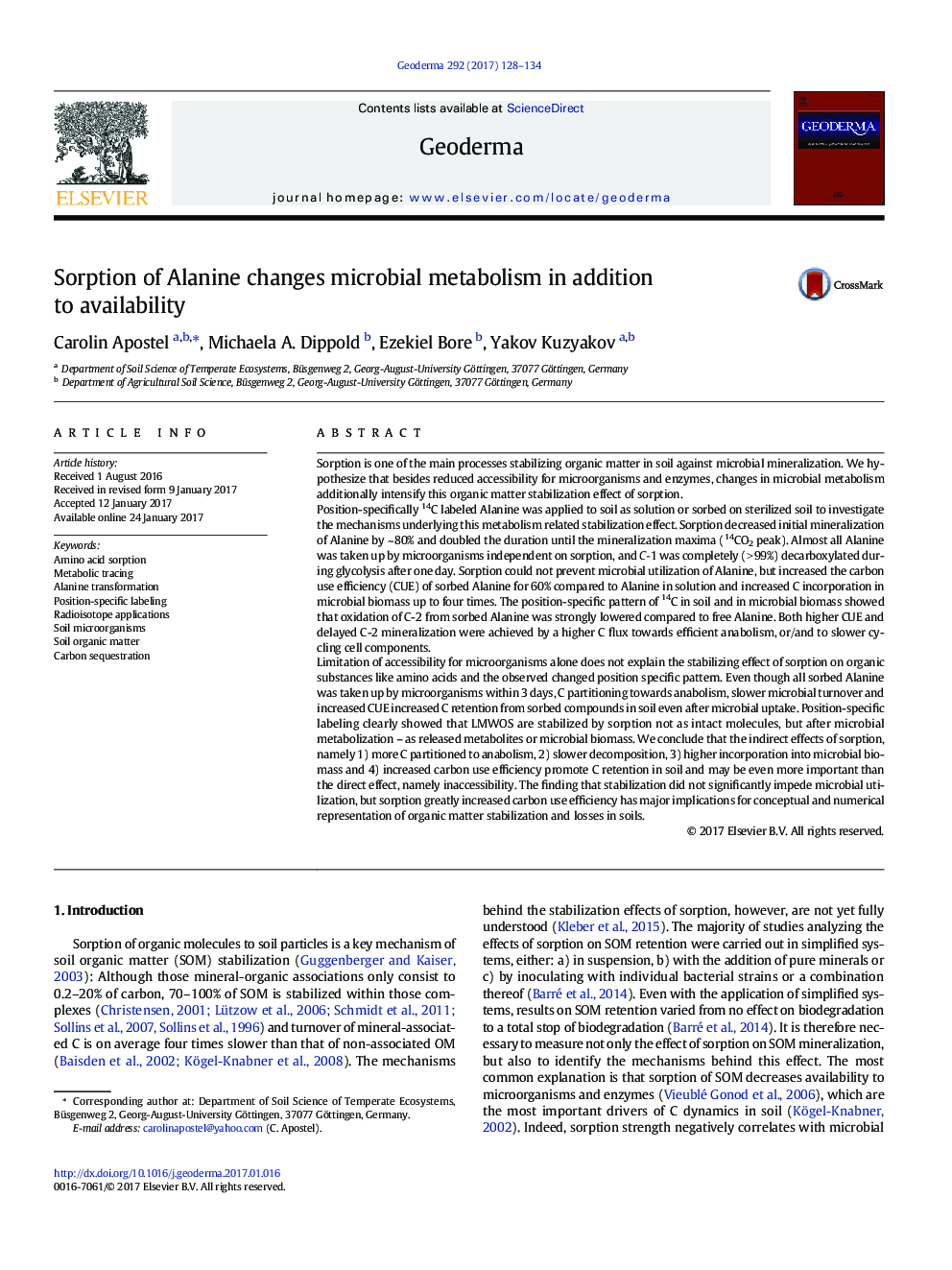| کد مقاله | کد نشریه | سال انتشار | مقاله انگلیسی | نسخه تمام متن |
|---|---|---|---|---|
| 5770700 | 1629425 | 2017 | 7 صفحه PDF | دانلود رایگان |
- Free and sorbed pos.-spec. labeled Ala were applied to study the effect of sorption.
- Only in the first h, sorbed Ala was mineralized less than free Ala.
- After one day CO2 production was equal from free and sorbed Ala.
- After one day, all sorbed Ala was taken up, but metabolized with a higher CUE.
- Sorption of OM promotes stabilization by changing microbial metabolism.
Sorption is one of the main processes stabilizing organic matter in soil against microbial mineralization. We hypothesize that besides reduced accessibility for microorganisms and enzymes, changes in microbial metabolism additionally intensify this organic matter stabilization effect of sorption.Position-specifically 14C labeled Alanine was applied to soil as solution or sorbed on sterilized soil to investigate the mechanisms underlying this metabolism related stabilization effect. Sorption decreased initial mineralization of Alanine by ~Â 80% and doubled the duration until the mineralization maxima (14CO2 peak). Almost all Alanine was taken up by microorganisms independent on sorption, and Câ1 was completely (>Â 99%) decarboxylated during glycolysis after one day. Sorption could not prevent microbial utilization of Alanine, but increased the carbon use efficiency (CUE) of sorbed Alanine for 60% compared to Alanine in solution and increased C incorporation in microbial biomass up to four times. The position-specific pattern of 14C in soil and in microbial biomass showed that oxidation of C-2 from sorbed Alanine was strongly lowered compared to free Alanine. Both higher CUE and delayed C-2 mineralization were achieved by a higher C flux towards efficient anabolism, or/and to slower cycling cell components.Limitation of accessibility for microorganisms alone does not explain the stabilizing effect of sorption on organic substances like amino acids and the observed changed position specific pattern. Even though all sorbed Alanine was taken up by microorganisms within 3Â days, C partitioning towards anabolism, slower microbial turnover and increased CUE increased C retention from sorbed compounds in soil even after microbial uptake. Position-specific labeling clearly showed that LMWOS are stabilized by sorption not as intact molecules, but after microbial metabolization - as released metabolites or microbial biomass. We conclude that the indirect effects of sorption, namely 1) more C partitioned to anabolism, 2) slower decomposition, 3) higher incorporation into microbial biomass and 4) increased carbon use efficiency promote C retention in soil and may be even more important than the direct effect, namely inaccessibility. The finding that stabilization did not significantly impede microbial utilization, but sorption greatly increased carbon use efficiency has major implications for conceptual and numerical representation of organic matter stabilization and losses in soils.
115
Journal: Geoderma - Volume 292, 15 April 2017, Pages 128-134
